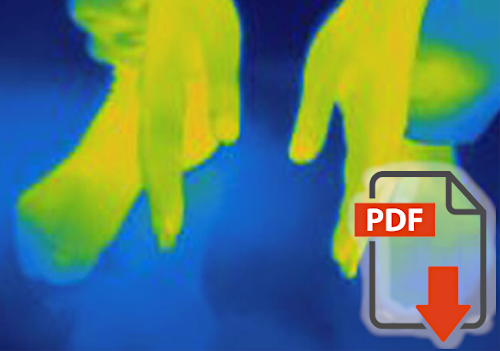Other aspects of the Flammer syndrome
| The topic of this website is blood circulation in glaucoma. One of the causes of circulatory disorders in glaucoma is Flammer's syndrome. We have already discussed this in the corresponding chapter and we have discussed the treatment of Flammer's syndrome in the chapter "Glaucoma Therapy / Improving Regulation". However, Flammer's syndrome has an impact not only in glaucoma, but also in many other diseases, see: http://www.flammer-syndrome.ch As a supplement to the above information, we provide some references to other associations below. These may indirectly contribute to a better understanding of glaucoma. |
|
 K Konieczka, J Flammer, C Erb: Diseases associated with Flammer Syndrome: An Update |
Most people with Flammer syndrome are healthy and able to work. They have a good, usually even a very good life expectancy. However, these people have more frequent episodes of hypoxia and unstable blood flow. This locally increases oxidative stress, and such stress can influence the occurrence and course of many diseases. In this review, Konieczka et al. discuss the potential impact on patients with arterial or venous vascular occlusion, anorexia nervosa, multiple sclerosis, retinitis pigmentosa, central serous retinopathy, Leber's hereditary optic neuropathy, "visual snow," optic nerve compartment syndrome, altitude sickness, hearing loss, thyroid dysfunction, breast cancer, and pancreatic carcinoma. |
 J Flammer, K Konieczka: General Lessons Learned from Flammer Syndrome |
Today's medicine is very broad, and medical research accordingly covers a wide spectrum. This ranges from basic molecular research to clinical empirical medicine. In this article, Flammer et al. describe their experience in this area of conflict when researching Flammer's syndrome. They describe the importance of the different methods from their point of view. |
 RD Gerste: Contributions to Progress in Ophthalmology from Switzerland: From the 16th to the 21st Century |
Many things come and go, and often only the progression over time reveals the true relevance. This is true not only for findings in patients, but also for trends and topics in research. Therefore, it is interesting to see what place the research discussed on this website on the role of blood flow in glaucoma, has or will have in history. Gerste, an ophthalmologist and historian, describes in this article the contribution of Swiss ophthalmologists to the development of today's modern ophthalmology. In doing so, he also acknowledges the research of the Basel Glaucoma Group at that time. |
 J Flammer et al.: Books on glaucoma and related diseases |
On this website we had to select some literature and this is of course somewhat arbitrary. For those who are interested, we show here finally some books, which have partly directly, partly indirectly, a relationship to the ocular circulation in glaucoma. |
 B Teuchner, S Orgül, H Ulmer, T Haufschild, J Flammer: Reduced thirst in patients with a vasospastic syndrome |
One of the symptoms of Flammer syndrome is a reduced feeling of thirst. Many of these patients drink enough, but not because they are thirsty, but because they know they have to drink. Reduced sense of thirst is not specific for FS, we also observe this in diseases associated with increased plasma levels of endothelin, such as in the acute phase of giant cell arteritis. |